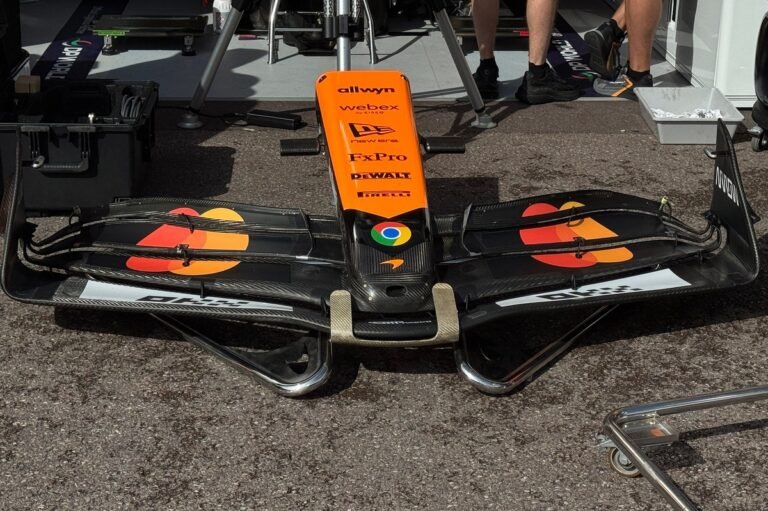FIA Introduces Stricter Testing Regulations for F1 Front Wings
BARCELONA, Spain — The FIA has announced revised testing measures for Formula 1 front wings, effective from the upcoming Spanish Grand Prix. Under the new regulations, the permissible deflection of front wing flaps under load has been reduced from 15mm to 10mm, as stipulated in Article 3.15.4 of the technical regulations.
Aero-elasticity has long been a contentious topic in F1, with teams utilizing controlled flex to reduce drag and enhance top speed. Recent developments in materials science have made it easier for teams to engineer wings that flex predictably under aerodynamic loads. However, as performance gains narrow, the FIA has intensified scrutiny on wing flexibility.
This follows a series of controversies, particularly involving McLaren’s rear wings, which were accused of flexing to reduce drag, a phenomenon sometimes referred to as ‘mini-DRS.’ In response, the FIA implemented high-definition monitoring through on-board cameras and modified testing procedures to curb such practices.
The FIA’s decision to enforce stricter front wing regulations was initially made in January but was postponed to allow teams additional time to adapt their designs. Red Bull, among others, advocated for the changes to take effect at the Emilia Romagna Grand Prix rather than wait for Spain.
A static load of 1000 Newtons will be applied to the front wing during inspections, with the new limits to prevent excessive flex engineered into the wing’s structure. Additionally, smaller rear flaps will be tested under a 60-Newton load, with a maximum deflection of 3mm at the outboard edge.
"This phased approach allows teams to adapt without the need to discard existing components unnecessarily," stated an FIA official. "These adjustments are aimed at further refining our ability to monitor and enforce bodywork flexibility regulations, ensuring a level playing field for all competitors."
As teams prepare for the Spanish Grand Prix, speculation continues over the impact of these regulatory shifts on competitive performance, with Red Bull notably vocal in its scrutiny of McLaren’s wing designs. The changes mark a significant step towards greater regulatory compliance and fairness in the ever-evolving technical landscape of Formula 1.



